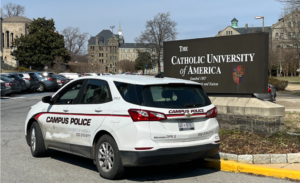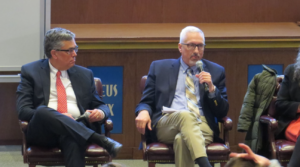Death of a Franchise: How the Washington Redskins Went from the Hottest Ticket in Sports to Irrelevance and Mediocrity

Image courtesy of Steve Ronin, YouTube
By Fabrizio Gowdy
If you hike up to nearby Fort Totten Park on a clear day and look to the southeast, you might be able to see Robert F. Kennedy Memorial (RFK) Stadium faintly on the horizon, a rusting carcass of a once-great NFL franchise. For longtime D.C. residents, RFK Stadium stands as a decrepit reminder of what used to be one of the league’s premier teams.
In the early 1990s, the Washington Redskins were riding high, winners of three Super Bowls in ten years. Located in the residential Capitol Hill neighborhood and serviced by the Stadium-Armory metro station, RFK Stadium was easily accessible to Washingtonians of all stripes.
Week after week, Washington played in front of raucous sell-out crowds, with tens of thousands more fans stuck on a waiting list to buy season tickets. Tickets were so sought-after that in 1985, the US Marshals used the ruse of free Redskins tickets to lure 101 wanted criminals to the Washington Convention Center, where they were arrested in a massive sting operation.
Things began to change in 1997 when the team moved to Jack Kent Cooke Stadium in Landover, Maryland. Soon renamed FedEx Field, it had almost double the capacity of RFK, with its 91,000 seats representing the most in the NFL until MetLife Stadium opened in 2010.
Moving from D.C. to the Maryland suburbs did not immediately dampen enthusiasm. From 2006 to 2008, the Redskins actually led the NFL in attendance, averaging 87,000 fans per game in that span. The high water mark came on December 30, 2007, when 90,910 packed in to watch Washington clinch a playoff spot with a 27-6 win over none other than the Dallas Cowboys, the Redskins’ divisional arch-rival.
Since 2012, however, average ticket prices soared 40 percent while attendance dropped 33 percent. In 2021, Washington struggled to fill its mammoth stadium, achieving an average capacity of just 64 percent, the worst in the NFL. In 2018, just a few years after owner Dan Snyder claimed the season ticket waitlist had reached 200,000, the Redskins ticket office admitted there was no longer a waitlist to buy season tickets.
At any given game this past season, the home crowd could expect to be greeted by thousands of empty seats and be outnumbered by opposing fans, a once-unthinkable and disheartening sight.
What went wrong? How did things get so bad so fast? The general consensus among fans and sportswriters is that owner Dan Snyder bears much of the blame, with Washington Post sports columnist Barry Svrluga dubbing Snyder the “overlord of incompetence” in a recent op-ed. Snyder’s 23-year tenure has seen numerous scandals that have damaged the franchise’s prestige, including workplace harassment accusations resulting in an NFL investigation and fines.
Washington’s performance on the field has hardly been any better. The team has not won a playoff game since 2005, with six different head coaches compiling a 102-154 (.398) regular season record since then. Snyder has shown a tendency to sink big money into high-profile free agents, who end up being past their prime and amount to nothing.
Unlike RFK, FedEx Field is a mile from the nearest metro station, and parking can cost $60. Scores of fans used to pour into RFK on foot and by metro from across D.C., including many loyal fans from a more “working class” background.
As Redskins games became less accessible and more expensive, the demographics of those showing up in the stands shifted to a more suburban “wine and cheese crowd.” This moniker for affluent, unenthusiastic fans has also been given to the Panthers fanbase in the past, but Carolina seems to be moving away from that distinction as Washington continues to head in the wrong direction. The recently announced rebrand to the “Washington Commanders” is unlikely to reverse that trend.
I witnessed this decay of the fanbase firsthand last December, while riding the orange line toward FedEx field on a gameday. I was surprised by how empty the train was an hour before kickoff, with only a trickle of mostly older fans in faded Redskins gear making the trip. I overheard one fan expressing to another his hope that the team would move back to RFK.
For now, that hope is little more than a pipedream. Even as the once-vibrant fanbase has withered with apathy and discontent, the Redskins’s revenue has climbed $300 million since 2001. If there is a non-monetary incentive for Dan Snyder to move the team back into the city, it remains to be seen. Even with the FedEx Field lease ending in 2027 and some speculation about a return to D.C., it still seems unlikely.
As for 61 year-old RFK stadium, it is slated to be demolished later this year. The hulking structure will no longer loom over the nearby neighborhoods from which fans used to pour in, but it will leave in its place a gaping hole in the heart of Southeast D.C., a reminder of what once was.






